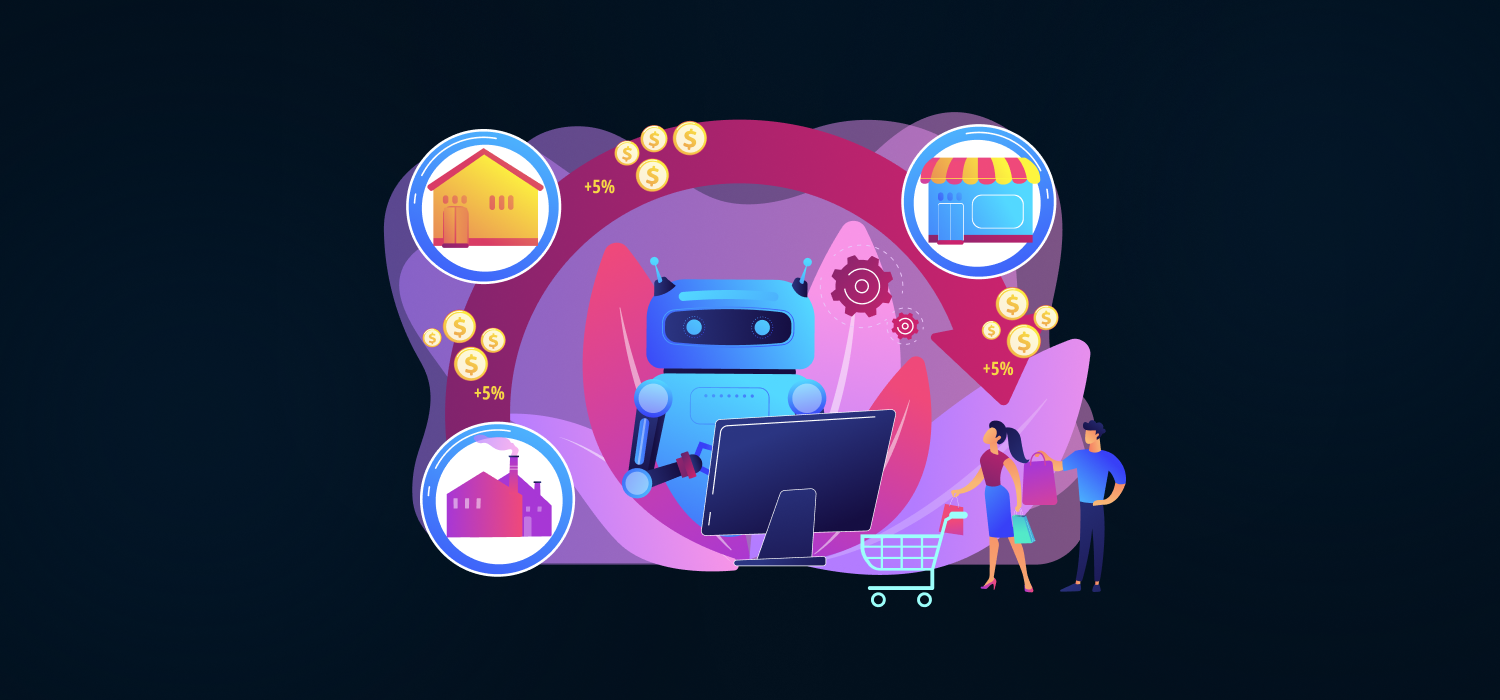RPA Adoption in USA Retail and Ecommerce
E-commerce is expected to grow from USD 25.93T in 2023 to USD 83.26T by 2030 (Grand View Research), while retail will rise from USD 27.26T to 36.91T (Mordor Intelligence). This growth is driving more use of RPA in USA retail and e-commerce to simplify operations and improve efficiency.
In retail, RPA manages stock, refunds, and supply chain tasks, while in ecommerce, bots process payments, send shipping updates, and detect fraud.
In this blog, we will talk about what RPA is, its role in USA retail and ecommerce, key trends, adoption stats, benefits, challenges, and why businesses are moving toward automation in 2025.
What is RPA?
RPA stands for Robotic Process Automation. It uses software bots to handle repetitive tasks like data entry or order processing.
In USA retail and ecommerce, RPA cuts down manual work. Bots manage inventory checks or customer queries without human input. It frees up staff for creative roles, like planning sales strategies.
How is RPA Used in USA Retail Industry?
In the USA retail industry, RPA (Robotic Process Automation) is making everyday operations faster and easier.
- Inventory management: Bots track stock levels by scanning shelves and updating counts in real time.
- Customer service: Returns are processed smoothly as RPA handles forms and issues refunds without delays.
- Supply chain: Bots study sales patterns and predict demand, helping stores order goods before they run out.
With these uses, RPA helps busy USA retailers serve customers quickly while keeping operations efficient.
What About RPA in Ecommerce Industry?
RPA is changing how ecommerce businesses in the USA work every day.
- Order processing: Bots handle online orders, confirm payments, and share shipping details quickly.
- Personalization: RPA looks at past purchases and suggests products customers may like.
- Fraud prevention: Suspicious patterns in transactions are flagged in real time.
With these uses, ecommerce companies in the USA can serve customers faster and compete better with large players like Amazon.

What Are The Key Trends in RPA for the Retail Sector?
The key trends in RPA for the Retail sector are:
- Integration with AI: Bots learn from patterns, helping retailers make better forecasts.
- Cloud-based bots: Small and mid-sized shops in the USA can use RPA without heavy setup.
- Mobile focus: RPA is adapting to phone apps, which is important for ecommerce growth.
- Sustainability push: Bots help reduce energy use in warehouses and stores.
- Security upgrades: Stronger protection is being added to keep customer and business data safe.
These trends show how RPA is changing to match the needs of the retail sector in the USA.
What Are The Statistics on RPA Adoption in 2025?
Recent studies show that Robotic Process Automation (RPA) is growing quickly across industries, including retail and ecommerce. Here are some key figures for 2025:
- The global RPA market is projected to reach $28.31 billion (Precedence Research, 2025).
- Retail RPA adoption is expected to rise by 29% by 2026 (A3Logics, 2025).
- About 53% of businesses have already implemented RPA in their processes (Market.us Scoop, 2025).
These statistics highlight how automation is becoming a core part of business growth, especially in the USA retail and ecommerce market.
What Are The Key Benefits of RPA in Retail and Ecommerce?
RPA makes retail work quicker, smarter, and more efficient.
- Faster operations: Orders are processed and shipped sooner, keeping customers happy.
- Cost savings: Less pressure to hire extra staff during busy seasons.
- Accuracy boost: Pricing, stock updates, and billing have fewer mistakes.
- Data insights: Automated reports help managers make better decisions.
What Are the Challenges of Using RPA in USA Retail?
RPA brings value but comes with a few hurdles.
- Setup takes time: Staff must learn and adjust to new systems.
- Limited fit: Not every task is right for automation, complex issues still need people.
- Initial costs: Smaller businesses may find the starting expense high.
- Long-term benefits: Despite hurdles, gains often outweigh the challenges.
Conclusion
RPA adoption in USA retail and ecommerce transforms how businesses run. From automating orders to analyzing trends, it drives efficiency. As 2025 unfolds, more companies will turn to RPA in the retail industry and RPA in ecommerce industry for an edge.
Ready to adopt RPA for your retail or ecommerce needs? Connect with us today to discuss custom solutions.
FAQs
What are top RPA tools for USA retail?
UiPath and Automation Anywhere are popular in USA retail for automating inventory and sales tasks.
How much does RPA cost for ecommerce startups?
Implementing RPA for ecommerce startups usually costs between $10,000 and $50,000, depending on size.
What’s the difference between RPA and BPM in retail?
RPA automates specific tasks like data entry, while BPM manages whole processes like supply chains.
Can RPA handle seasonal peaks in USA ecommerce?
Yes, RPA can increase bot activity during holidays to handle higher order volumes efficiently.
Is RPA secure for customer data in retail?
RPA uses encryption and security measures to protect customer data according to USA standards.

 contact
contact

 By
By 


